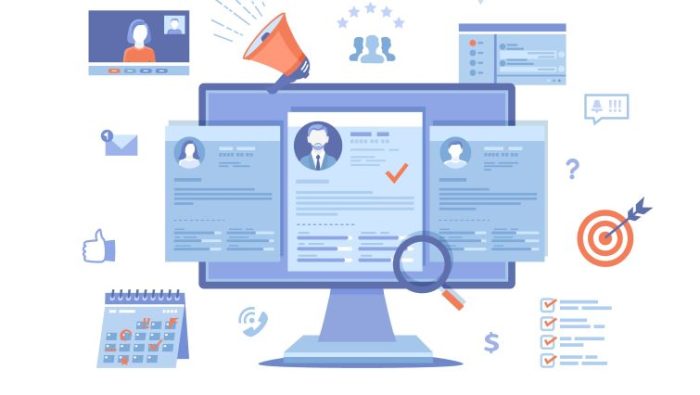How To Develop A Data-Driven Recruitment Strategy
 Publié le 30 June 2022
Publié le 30 June 2022
Organizations in all industries and sectors looking to use their resources to effectively find the best candidates for the job need to know how to develop a data-driven recruitment strategy.
If there’s anything we’ve learned from our way of doing business – be it designing your campaign plan, marketing strategy, or monthly assessment – numbers don’t lie. Especially when we’re talking about the hiring process, we can’t rely solely on intuition and luck. In business, the slightest hiring mistake can mean additional training and hiring costs, so we need to be careful during the recruitment process in order to make the best use of limited resources..
Understanding how to develop a data-driven recruitment strategy is essential to successfully completing this process..
How To Develop A Data-Driven Recruitment Strategy
- Identify the correct data and metrics
- Review recruitment tool ROI
- Use the data to identify gaps
- Do a post-hire analysis
- Know the limitations of using data
- Use the data to plan
1. Identify the correct data and metrics
Using data to develop a factual recruitment process doesn’t mean throwing in all the statistics you have–you would still need to define the necessary metrics and data you need to track. The first metric you might want to prioritize is the quality of hire, which gauges the value that potential candidates might contribute to your company.
According to a survey by Jobvite, quality of hire is the top priority recruiters aim to improve within a year. Many businesses lean on this to show the total effectiveness of their entire recruitment strategy .
There are other types of metrics to choose from:
- Time-to-hire – refers to the time between the candidate applying for the job and accepting the job offer.
- Cost-per-hire – refers to the total cost you’ve spent throughout the recruitment process per number of hires you’ve had.
- Candidate experience scores (e.g., application conversion rates, candidate feedback) are the impression of the job candidates of your application process.
- Source of hire – shows the rate of where your overall hires connected with you from, i.e., the different recruiting channels bringing in candidates.
- Job offer acceptance rates – show the percentage of candidates who accepted your job offer.
The key is to determine the right metrics to follow based on your business needs to attract the most skilled and qualified candidates and avoid a bad hire. To know this, you can ask your hiring manager or hold a meeting to brainstorm how they would have wanted to do their recruitment process. These may dwell on the things you should inform them about during their hiring process, the metrics to use for productivity, the hiring roadblocks they’ve noticed, and more useful insights.
2. Review recruitment marketing ROI
Since your hiring plans largely depend on data and facts, you have to review your recruitment marketing plans, spending, and returns. These will serve as a reliable data set for quantifying the performance of your recruitment team when it comes to planning and implementing hiring strategies.
The first step in determining recruitment ROI is to gather and analyze marketing data. This data includes the amount of money you spend per channel, the number of candidates you gather, and the number of successful hires. This step is particularly complicated since your business reaches individual candidates through more than one channel at any given time. A simple solution is only tracking the channel through which the candidate submits their application.
Social media engagement will help you gauge the effectiveness of your recruitment marketing as it quantifies how job seekers receive your narrative, messaging, and brand image. The social media numbers to monitor are impressions and engagements, such as likes, comments, shares, and retweets. Check the amount of spend per boosted ad or post as well.
Web traffic is also an informative metric, showing your reach on the Internet and how candidates perceive your company brand. During the hiring process, candidates will look at different pages on your website, such as internal blogs, the careers page, or About Us page. The last two pages are critical as candidates will get their impression of your company from them and could be inspired to either engage further or to search for other resources.
Brand awareness also tells you how job seekers know about your brand, which will reflect in the number of their searches about you on search engines and job boards. Job seekers looking you up by brand is a good sign that your marketing efforts are working.
3. Use the data to identify gaps
Understanding how to develop a data-driven recruitment strategy allows you to create an intelligent recruitment plan. The data you’ve collected can also help you figure out the loopholes in your recruitment strategy. This gives you the necessary areas for improvement in your data-driven recruiting strategy.
So what do the numbers tell you? Let’s suppose you have a time-to-hire longer than the average. You can spot the roadblocks to your processes, such as sourcing candidates, screening the job applicants, scheduling interviews using a company phone system, or creating job offers.
If you notice a low job acceptance rate, you can take different actions to address it. For instance, you can perform market research to define a reasonable starting salary or benefits package, write better job offers that spell out the new hire’s responsibilities more clearly, or offer more remote working opportunities. Paying attention to these details contributes towards a positive candidate experience.
Those are some of the hurdles data-driven recruiting may help you with. Of course, there might be other hurdles to face as you go on with answering the questions above and analyzing your data.
The example above shows the new challenges recruiters face. Your data-driven recruitment planning might give you a few ideas about solving the manifestations of these problems in your business.
4. Do a post-hire analysis
Once you’ve uncovered the gaps in your recruitment strategy and made changes to address them, you still need to monitor the effects of that execution.
The goal is to hire ideal candidates. The points to look at are the acceptance rate, performance, retention rate, turnover rate, and other important areas in order to gain valuable insight regarding their training, onboarding and performance.
For example, a high turnover rate indicates a need to reassess something in your strategy. That is usually a case of failing to prepare and onboard the candidate about what to expect with the job. You might need to write better job descriptions or allot time to give a more detailed walkthrough of the job description.
Likewise, you should also continue to oversee your hiring process and test in practice if your new implementations are producing positive results. You can analyze your hiring process and results by applying the same steps again.
Analyzing and updating your data-driven recruitment strategy regularly allows you to resolve the cycle of acquisition versus retention. It also boosts recruitment efficiency.
5. Know the limitations of using data
Knowing how to develop a data-driven recruitment strategy allows you to make more informed decisions than the traditional hiring process, which can be highly intuitive. However, you must look at your data only as a quantifiable metric about your performance and the current conditions of candidate demographics and the industry. While the statistics are factual, data is not entirely absolute.
For one, data cannot interpret why an event happens. You still need to analyze the data, incorporate your other materials, and interpret what you can deduce.
Data doesn’t solve the problems for you. While it’s essential to figure out your weaknesses, it will still be up to you what plan you can execute or what you can do with your information.
Data is good, yes, but that doesn’t mean you’ll rely on it for everything. There are some aspects of recruitment that are best left to human judgment. For example, screening a candidate’s performance would be more reliable if done by a person who has first-hand knowledge of the demands of the role.
6. Use the data to plan
Use predictive analytics when coming up with a data-driven recruitment strategy from recent changes. Under predictive analytics, you use historical data to develop future predictions, which you will use for future planning. The key is to identify the historical data patterns that will guide your hiring decisions.
You can use this to detect employees with risks of resigning or retiring and their potential impact on company finances and resources. Identify the causes and variables of their resignation to develop plans and changes to address the bottleneck. You may also use this to plan their retention, like having behavior-based and value-based questions in your interview to gauge how a candidate fits in the company culture.
With the data you have from your existing employees, you can develop a predictive algorithm that allows you to identify candidates and recommend them as best-fit applicants. This strategy is called predictive hiring.
Predictive analytics can also speed up your talent acquisition, resulting in lower costs and more efficient processes. For example, several recruitment tools can now predict candidates likely to resign because of their low retention history.
In Closing
Data-driven recruiting helps suspend biases and allows you to hire the most qualified job candidates because stats and factual assessments guide you. Traditional recruitment using highly subjective metrics has little to no scientific justifications, failing to offer certainty of ROI from the candidate and the entire hiring process.
To develop a data-driven recruitment strategy, you must define your data and metrics, review recruitment analytics and use this data to identify the roadblocks in your strategy. Do a post-hire analysis, know the limitations of the data, and use them to create a plan.
Now that you have an idea about how to develop a data-driven recruitment strategy, it’s up to you and your team how to apply it.







